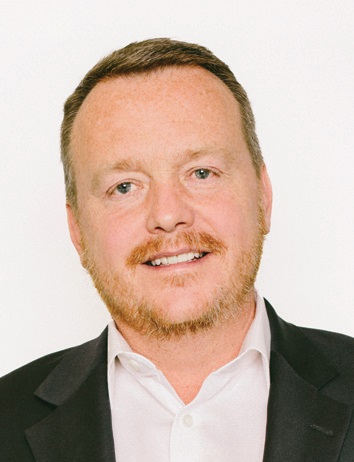By Joshua Burd
The need for so-called rescue capital for real estate projects was clear by the time that Denholtz Properties launched such a fund last fall.
Going public with its plan made it all the more obvious.
“We’ve seen the demand,” said Steven Denholtz, CEO of Red Bank-based Denholtz Properties, whose team fielded a flurry of calls after announcing the new fund.
“One of the things about the asset class is that people in trouble don’t want to tell you they’re in trouble. So they don’t want to go to the capital markets and have (brokers) blasting out: ‘We need rescue capital.’ Nobody wants their lender to see that or their partners to see it. They want to try to craft it as something a little bit different from that, so that’s the strategy.”

Discretion is key, the firm’s executives say, despite the size of the undertaking. Denholtz is now raising $100 million for the fund after its official launch in November, seeking to invest $5 million to $25 million per project in the form of preferred equity or mezzanine debt, subordinate only to first mortgage debt. It has already funded multifamily projects in New Jersey and North Carolina, with target geographies also including New York, Pennsylvania and other Southeast markets, as it looks to support fellow developers facing operating deficits, refinancing obstacles, unmet sale projections and other temporary capital challenges.
The 72-year-old firm, which has roots in multiple asset classes, has expanded its multifamily holdings in recent years through new development and acquisitions. That asset class is largely where it sees a need for rescue capital and a chance to draw on its own vertically integrated, in-house team to find investments and make them successful — all while building new long-term relationships.
“We can stand in the shoes of any aspect of the project,” said Stephen Cassidy, Denholtz’s president, later adding: “It’s really people in the middle of execution of a business plan, whether that be development or lease-up. And that’s not unique to location — that’s just unique to process. Anybody who has started a project like that 12 to 24 months ago or in that range, they have a problem because interest rates have changed to an extent that no one contemplated.”
Ironically, the Denholtz Opportunity Fund II evolved from an earlier investment vehicle that the company launched in 2022, seeking to acquire warehouse and logistics properties in key U.S. markets. That fund remains active, having closed deals in New Jersey and the Southeast, but Denholtz said it became clear that the investor landscape had changed.
“At the time, which was over a year ago, we thought that those limiteds were still out there,” Denholtz said in an interview late last year. “But the limited partners for a lot of the asset types — the institutional partners — are not out there for one reason or another. I think some have their own problems, others are hesitant, others have different strategies, but primarily it’s as a result of interest rates being greater than or equal to cap rates, so it just makes buying of existing assets very, very difficult.”
Cap rates, short for capitalization rates, are a calculation of an owner’s rental income for one year divided by the purchase price.
Denholtz began to weigh another opportunity, namely that “you had a lot of owners out there who have properties that are good properties and, all of a sudden, they found themselves in trouble for a variety of reasons.” Some may have had debt coming due but would have to refinance at a much higher rate, while others wanted to sell but had seen cap rates rise, “so they felt that most of their equity was wiped out and they wanted to hang on for another day.”
Others were simply grappling with cost overruns for their projects.
“Those are the three primary situations that we’ve been coming across, so we felt that we understood those owners’ problems, that we come at things from an owner’s point of view, that we can create very bespoke kind of solutions for people and that we’re not looking to steal properties from anybody,” Denholtz said. “And we didn’t have a rigid set of guidelines.”
The first investment under the new-look venture was a multifamily project in North Carolina that was less than 50 percent complete but was facing a budget shortfall, Denholtz said. The fund provided an infusion of $15 million ahead of all existing equity holders, enabling the Charlotte-area development to stay on track.
“That worked out well, so we started to gear the opportunity fund more toward those types of opportunities,” Denholtz said.
Denholtz then found a project in New Jersey that also seemed to fit the strategy, largely because its lender required “a substantial interest reserve” that the equity partners could not meet. But the development had strong fundamentals, the firm said, providing an opportunity for the fund to “give a runway for the next 18 months, stabilize the project and give the equity a chance to try to recover their money.”
Notably, the fund got off the ground by supporting “people that we’ve dealt with for a long time,” Denholtz said. The program started with a limited raise of capital, he added, but “now that we know that there’s a market out there for what we’re trying to do, we’re going a little more aggressively to find capital partners.”
“That was the strategy from an asset standpoint,” Denholtz said. “And from an investment capital standpoint, it was very tough to make deals work, and our partners are always pressing us for transactions — we had a couple of great sales (last year), so people wanted to reinvest their money — so we thought that this was the best investment strategy.”

The platform hinges largely on the firm’s in-house expertise. The company is vertically integrated with professionals in development and construction, leasing, property management and capital markets, among other functions, Cassidy said, so “we like to remind everybody that we’re doing more than just raising capital.”
That means Denholtz is “providing that background as operators, putting ourselves in position if they fail to pick up the pieces.” Equally important, he said, “we’re relationship people and consider ourselves community players and community members wherever we’re doing business.”
“We’re also helping people save their reputations because, if you’re a developer and you fail in a project, even in a tough market, unless you’re a really big company, that’s lights out for you, so to speak, in terms of your ability to do the next project,” Cassidy said. “So we’re not doing it for charity, we’re doing it for profit, but we believe in the long run that building relationships and staying active in your community is going to yield great results for us as a company.”
That also makes the rescue fund significantly different from the strategy of so-called hard money lenders, which typically charge higher fees and interest rates than banks and are willing to offer fast, flexible loans, but come with higher default rates. Both Denholtz and Cassidy described it as a more collaborative approach, specifically with projects that the firm knows it can tackle.
“If someone is going to work with a hard money lender, it’s going to be a financial relationship only,” Cassidy said. “What we bring is really deep knowledge and understanding about all the things that they might be experiencing. We’ve had our own trials and tribulations over our careers, so I think we approach it with a better mindset toward actually helping get to the end of the project, as opposed to a hard money lender who is really just trying to maximize their return.”
And while Denholtz said the rescue fund will cover “a relatively short investment period,” he expects it to remain active long enough to help bring projects to fruition.
“We don’t know how long this market will go on, but we think it’s got at least another year or year and a half,” he said. “That’s our investment period, and the strategy is really just to stabilize and transition the assets, so I would say we hope to be out of everything in four years.”
Filling a need
Nearly $1.5 trillion of commercial real estate debt is due to mature within the next two years, Denholtz Properties said, citing data from J.P. Morgan Private Bank. Yet the Mortgage Bankers Association anticipates a 38 percent decline in commercial and multifamily mortgage borrowing and lending from 2022 to 2023, meaning there will be an exponential increase in the need for preferred equity and mezzanine debt to bridge the current challenges facing property owners.










